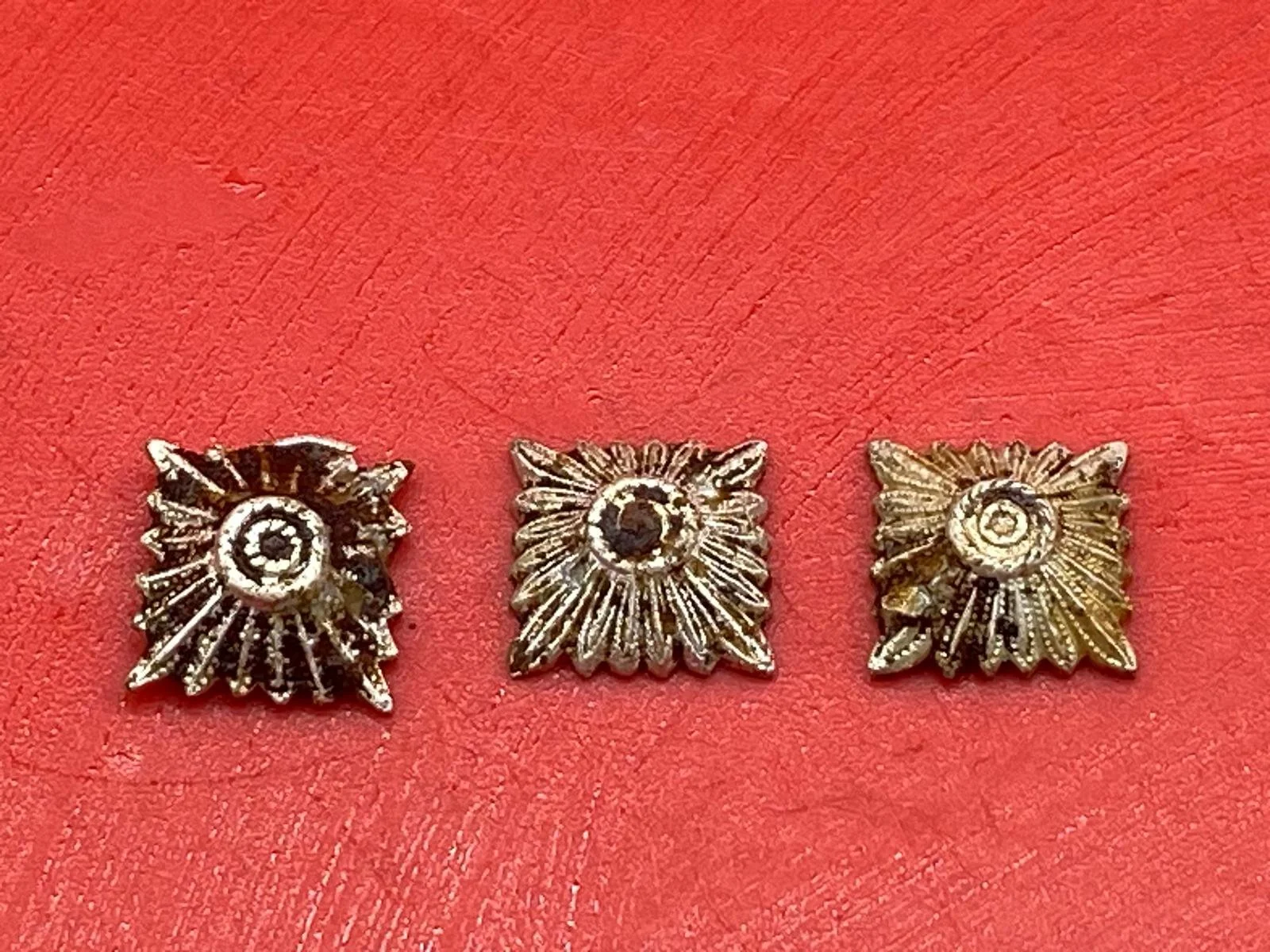 Image 1 of 7
Image 1 of 7

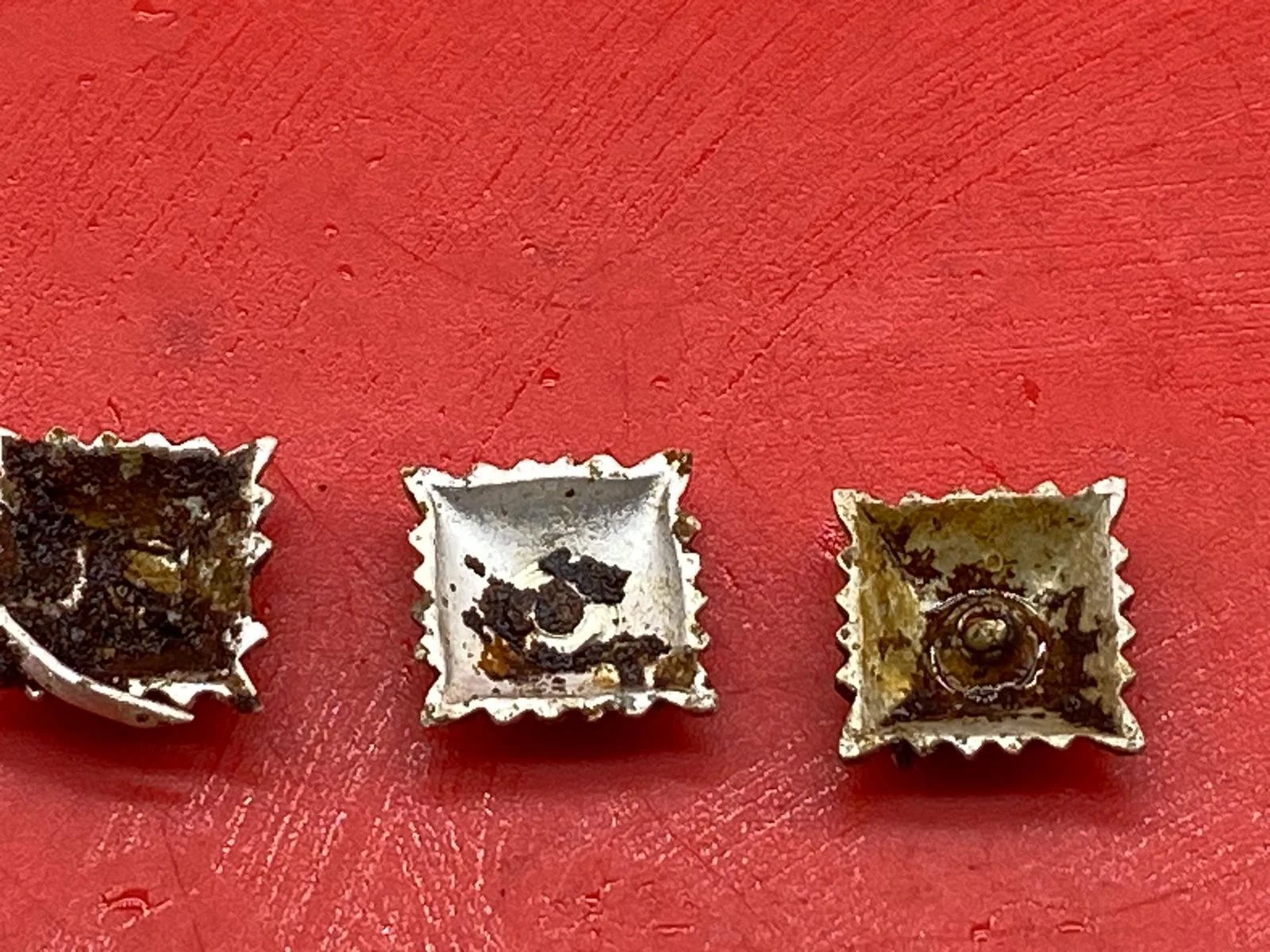 Image 2 of 7
Image 2 of 7

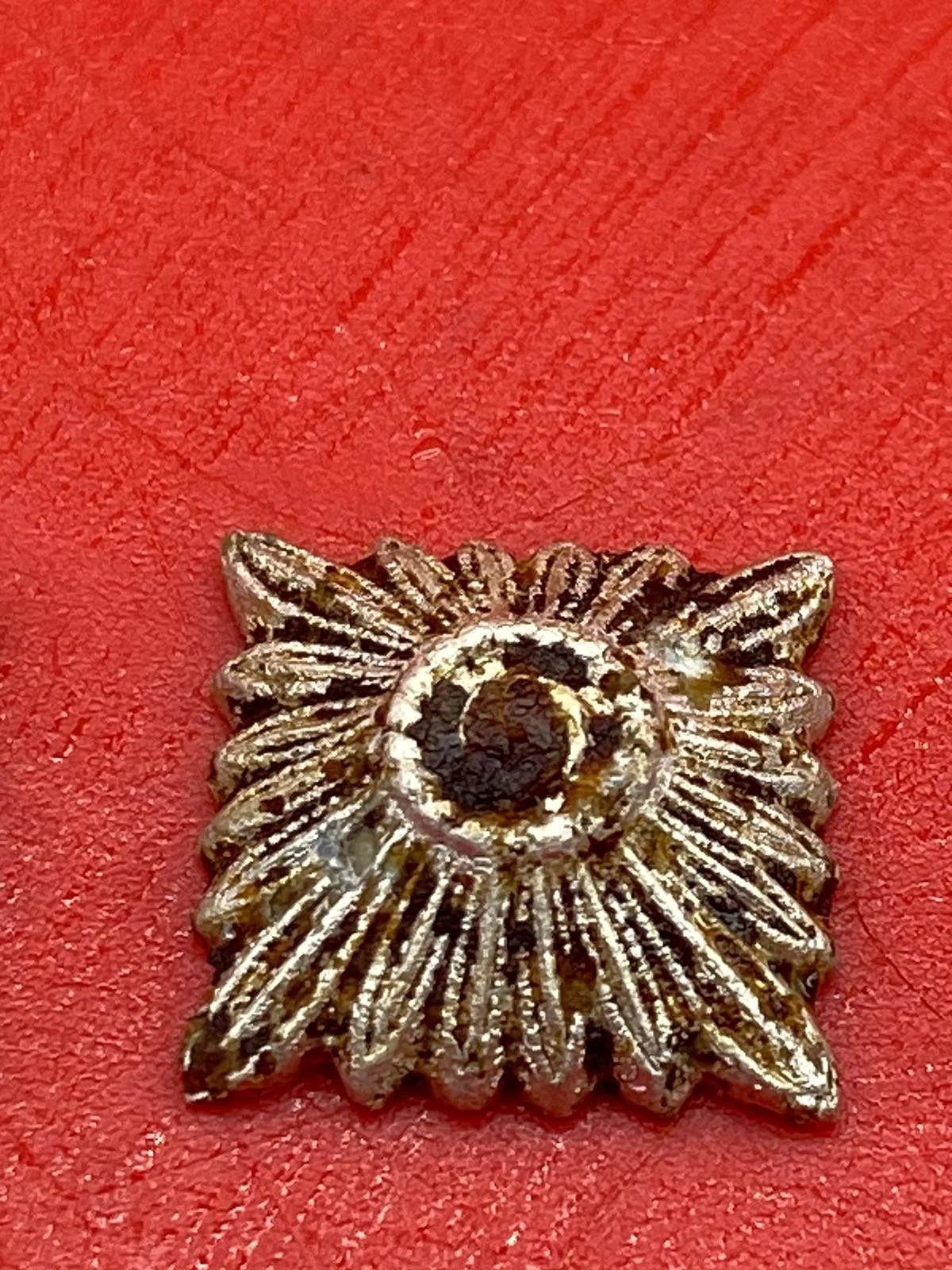 Image 3 of 7
Image 3 of 7

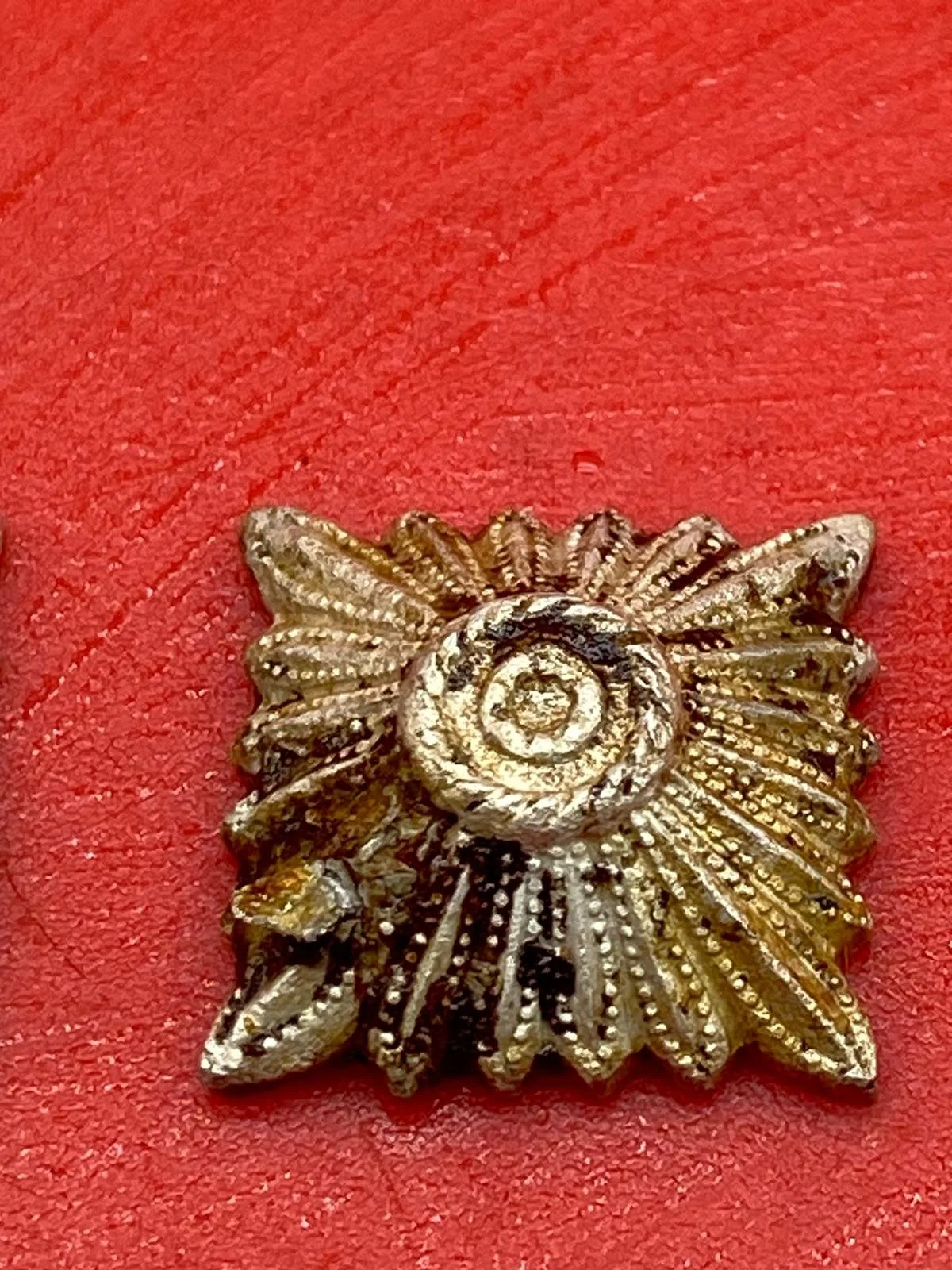 Image 4 of 7
Image 4 of 7

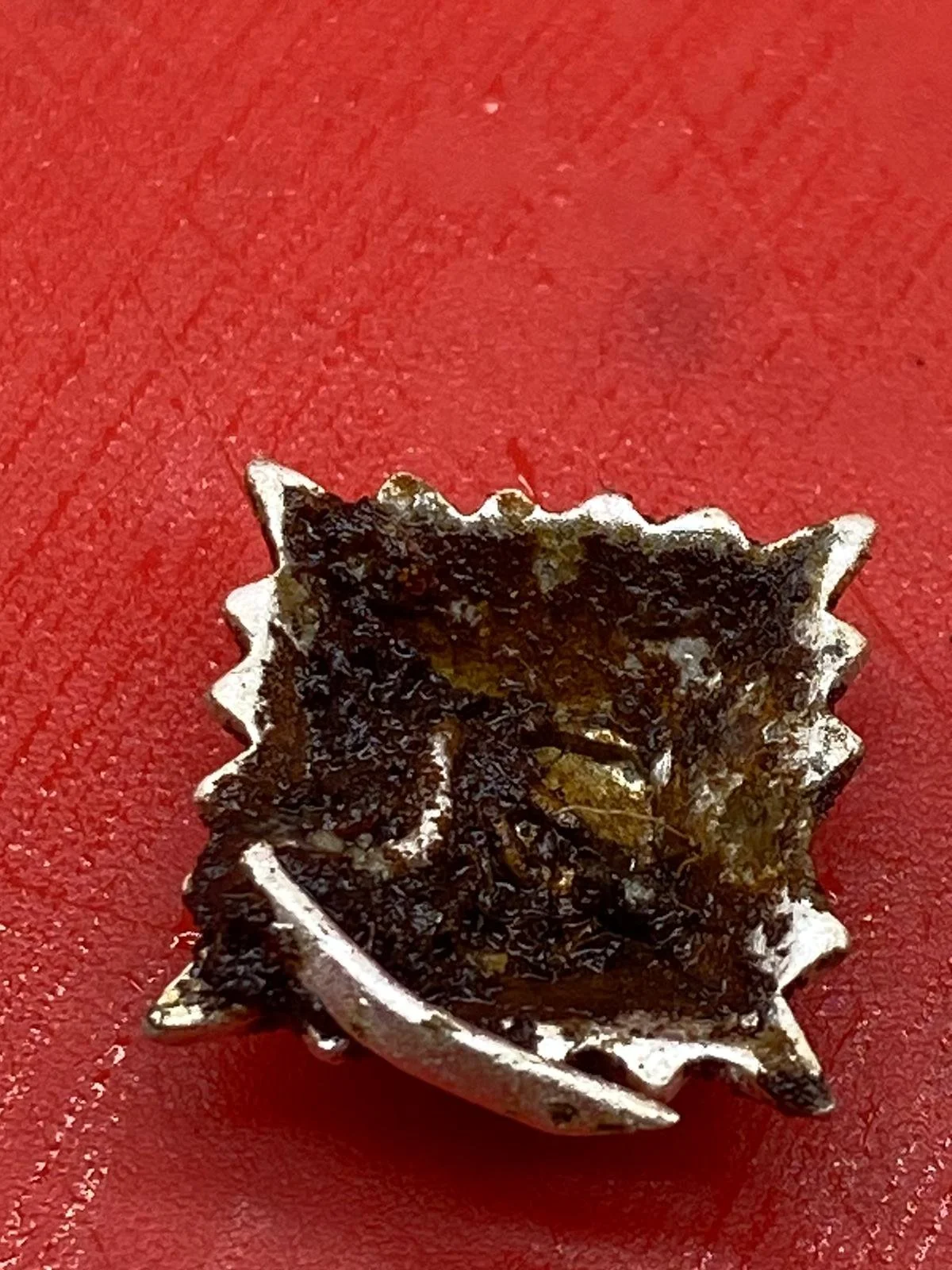 Image 5 of 7
Image 5 of 7

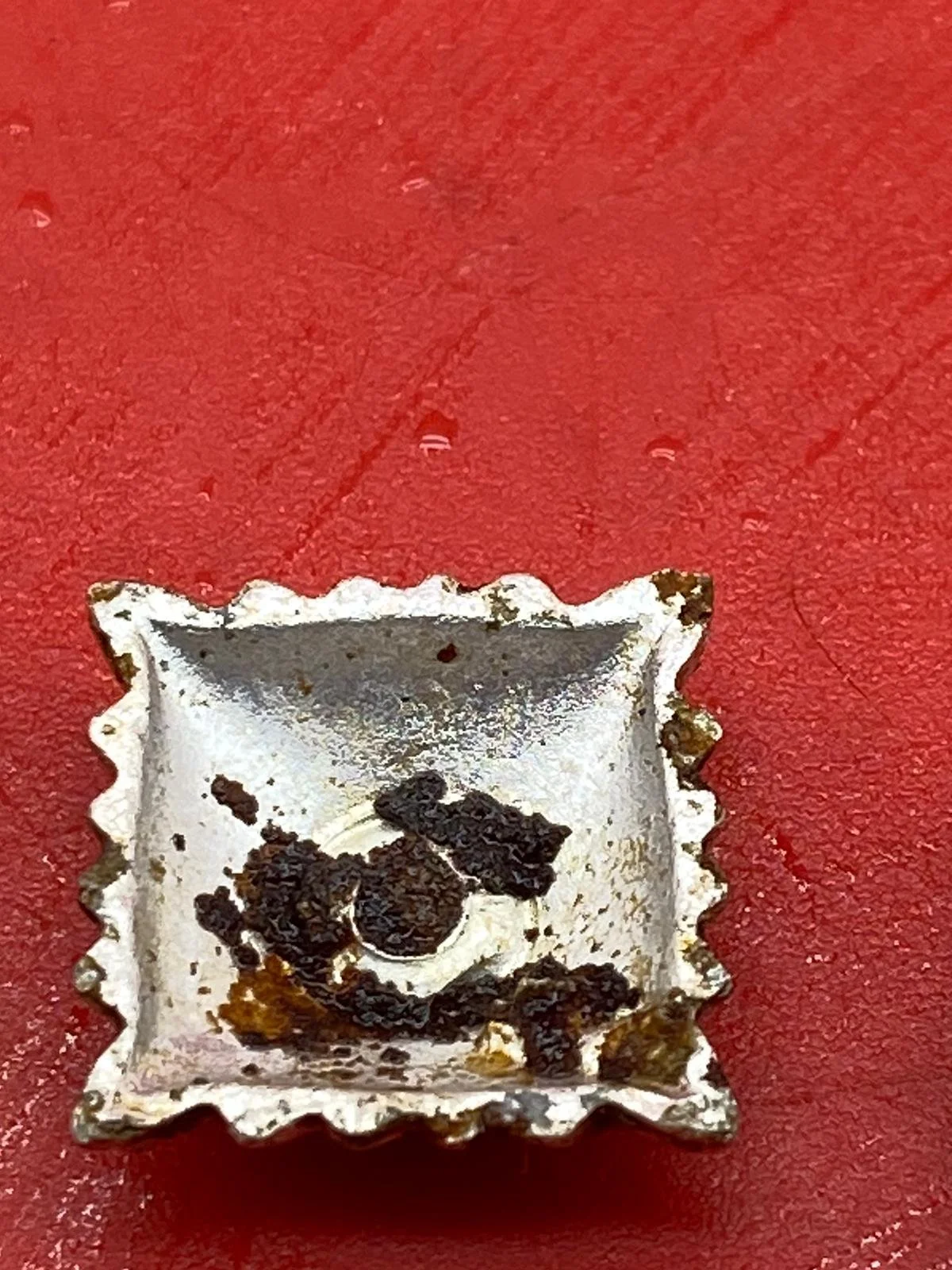 Image 6 of 7
Image 6 of 7

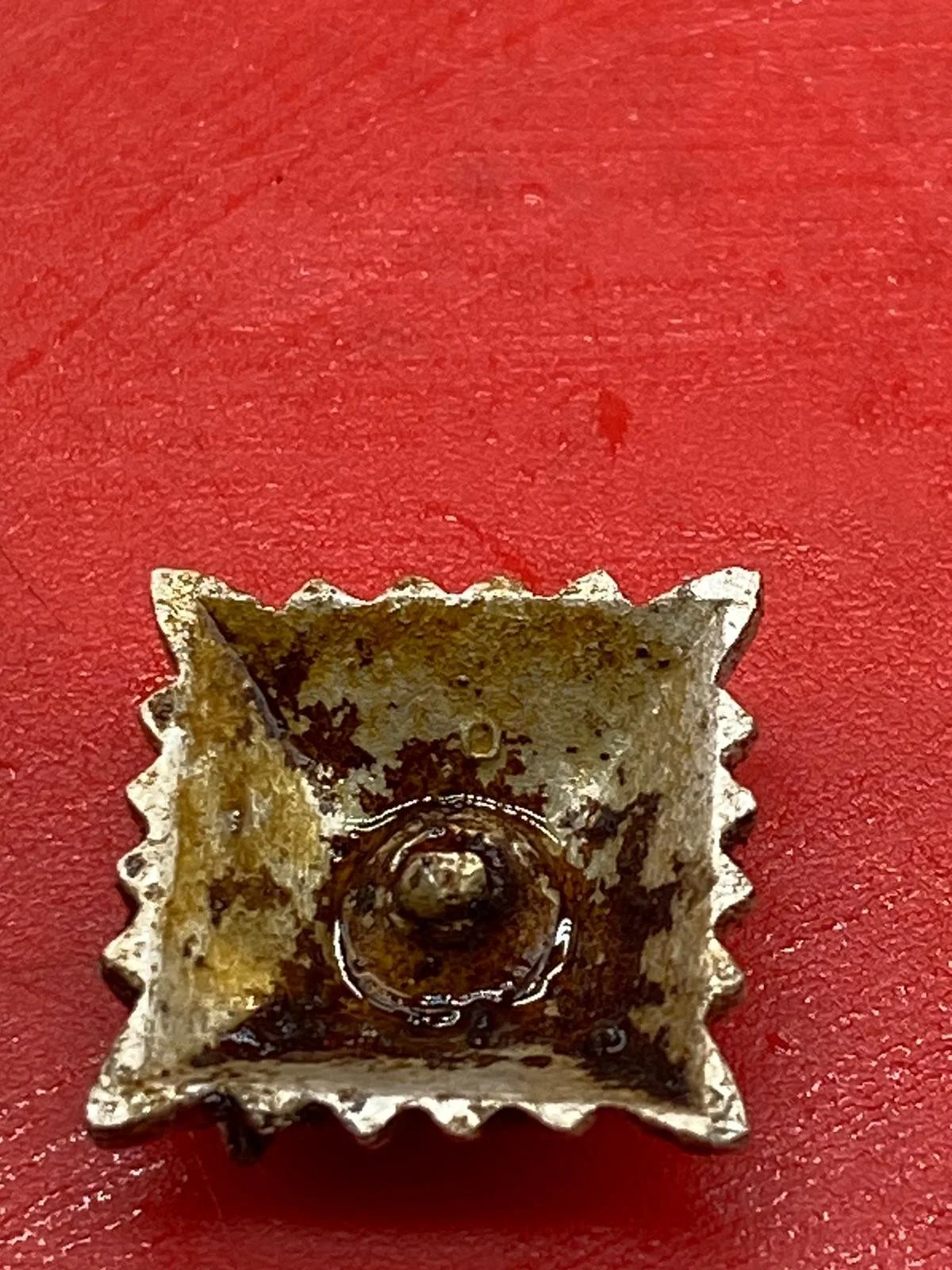 Image 7 of 7
Image 7 of 7








Group of 3 shoulder board silver rank pips which still retain some original colours recovered from Don River area outside Rostov-on-Don 1941-1942 Stalingrad
This is a group of three German shoulder board silver rank pips, retaining much of their original colour, with some slight discoloration and small fragments of uniform still attached. Not all are complete, with a couple missing pins, but the pips remain very solid and have been nicely cleaned. These rare battlefield relics are perfect for display or any collection.
The pips were worn by a soldier of the 1st Panzer Army and were recovered from the mouth of the Don River area outside Rostov-on-Don, an area attacked by the Army in November-December 1941, south of Stalingrad.
The 1st Panzer Army was a major German tank formation of the Wehrmacht during World War II. Originally formed on 1 March 1940 as Panzer Group Kleist (Panzergruppe Kleist) under Colonel General Ewald von Kleist, it advanced from Kiev, encircling Soviet troops at Melitopol in October 1941, and then pushed east along the Sea of Azov toward Rostov at the mouth of the Don River, considered the gateway to the Caucasus.
The assault on Rostov began on 17 November 1941, with the city falling to German forces on 21 November. However, German lines became over-extended, and Kleist’s warnings about the vulnerability of his left flank and the ineffectiveness of tanks in freezing weather were ignored. On 27 November, a Soviet counterattack forced the 1st Panzer Army to pull back from the city. Hitler initially countermanded the retreat, replacing Rundstedt with Reichenau when he refused to comply. Reichenau quickly recognised the validity of Rundstedt’s assessment and persuaded Hitler to allow a withdrawal, forcing the 1st Panzer Army back to the Mius River at Taganrog. This marked the first significant German withdrawal of the war.
This is a group of three German shoulder board silver rank pips, retaining much of their original colour, with some slight discoloration and small fragments of uniform still attached. Not all are complete, with a couple missing pins, but the pips remain very solid and have been nicely cleaned. These rare battlefield relics are perfect for display or any collection.
The pips were worn by a soldier of the 1st Panzer Army and were recovered from the mouth of the Don River area outside Rostov-on-Don, an area attacked by the Army in November-December 1941, south of Stalingrad.
The 1st Panzer Army was a major German tank formation of the Wehrmacht during World War II. Originally formed on 1 March 1940 as Panzer Group Kleist (Panzergruppe Kleist) under Colonel General Ewald von Kleist, it advanced from Kiev, encircling Soviet troops at Melitopol in October 1941, and then pushed east along the Sea of Azov toward Rostov at the mouth of the Don River, considered the gateway to the Caucasus.
The assault on Rostov began on 17 November 1941, with the city falling to German forces on 21 November. However, German lines became over-extended, and Kleist’s warnings about the vulnerability of his left flank and the ineffectiveness of tanks in freezing weather were ignored. On 27 November, a Soviet counterattack forced the 1st Panzer Army to pull back from the city. Hitler initially countermanded the retreat, replacing Rundstedt with Reichenau when he refused to comply. Reichenau quickly recognised the validity of Rundstedt’s assessment and persuaded Hitler to allow a withdrawal, forcing the 1st Panzer Army back to the Mius River at Taganrog. This marked the first significant German withdrawal of the war.
